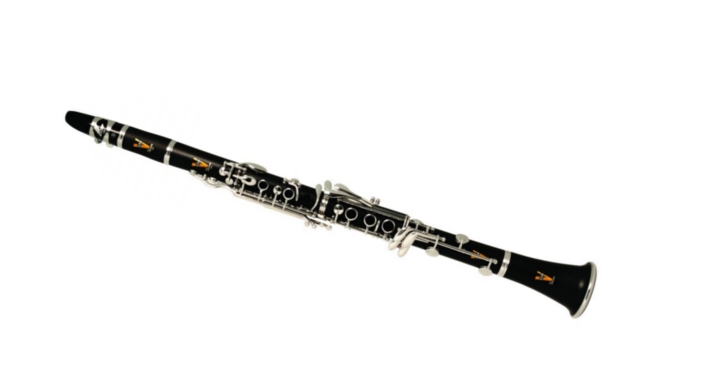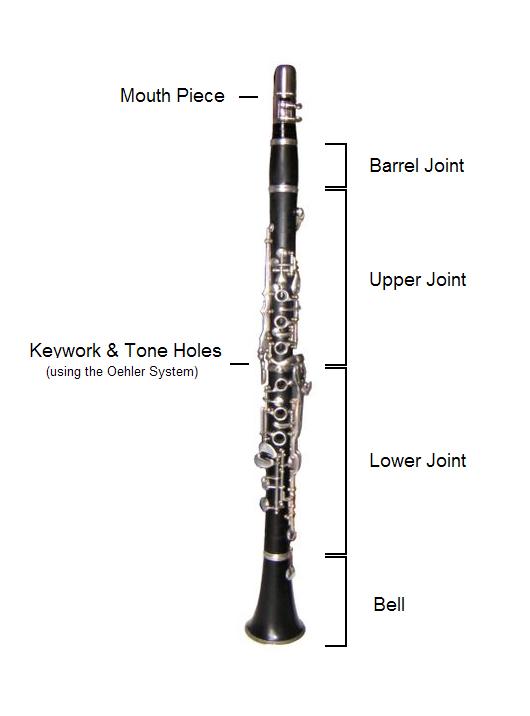Caring for Your Wooden Body Clarinets
Yamaha wooden body clarinets are made of grenadilla wood, a material more sensitive to changes in climate than plastic body clarinets. Sudden changes in temperature and/or humidity cause slight changes in the wood, possibly causing the body to crack or joints to swell. The following care is recommended to extend the life and maintain the quality of your clarinet.
Take extra care to prevent exposure to sudden changes in temperature and humidity. Avoid direct, extended exposure to:
• Sunlight • Rain • Heaters • Air Conditioners
Remove all moisture after you have finished playing.
Refer to Caring for the Interior of your Clarinet for detailed instructions.
Assembling Your Clarinet
Assemble, tune, clean and lubricate your instrument for the first time under the guidance of your teacher.
Applying Cork Grease
Applying cork grease (YAC 1010P) to the corks just before assembly promotes an easy, proper fit of clarinet joints. Be sure to apply an even coat on all cork joints to provide protection and extend cork life. It is a good idea to wipe off old cork grease before adding new. Joints that fit together easily need the least amount of grease.
Assembly Eb Soprano Clarinet:
• Attach barrel and bell to the main body.
• Attach mouthpiece to the barrel.
Bb and A Clarinets:
• Attach the barrel to the upper joint and the bell to the lower joint.
• Connect upper joint and lower joint with a gentle twisting motion. Pay careful attention to the bridge keys; careless assembly easily damages them.
• To move them into alignment, hold upper joint keys lightly, making sure the bridge key is up. Align the upper joint bridge key on top of the lower joint bridge key.
Alto and Bass Clarinets:
• If applicable, connect upper and lower joint (same as Bb/A clarinet). Otherwise, proceed to next instruction.
• Attach neck joint and bell.
• Attach mouthpiece to neck joint, taking care not to apply downward pressure on the neck.
Placing the Reed on the Mouthpiece
• Gently hold the reed in your mouth or in water for a few minutes before putting it on the mouthpiece.
• Place the reed on the mouth- piece and secure it with the ligature. In the normal playing position, you can just see the tip of the mouthpiece above the reed.
Tuning Your Clarinet
• Pitch is affected by temperature, so warm up the instrument before playing by blowing air through it.
• To tune, pull out the barrel on Eb and Bb and A clarinets; the neck on the alto clarinet; and the upper end of the neck on the bass clarinet. The length you pull the barrel out depends on individual style and method of playing.
Caring for the Interior of Your Clarinet
Removing the Reed
Remove the reed from the mouthpiece by loosening the ligature and sliding it off. Dry the reed with a clean cloth and place it in a reed holder (YAC RC-L).
Removing Moisture from the Mouthpiece
Remove all moisture and dirt from the inside of the mouthpiece by drawing a cleaning swab (YAC 1050P) through it. Take care not to scratch the mouthpiece, and always pass the swab through from the tenon cork end. A woodwind mouthpiece brush (YAC 1085P) may be used with warm soapy water when mouthpiece becomes especially dirty.
Cleaning the Body and Pads
Draw the cleaning swab (YAC 1050P for plastic clarinets or YAC 1051P for wood) through each joint and barrel to remove all moisture. For alto/bass clarinets, disassemble and dry joints separately.
Tenons tend to collect moisture, especially at the upper and lower joints. Wooden clarinets will begin to split in this area, so be careful to remove all moisture with gauze (YAC 1059P).
When drying a pad, insert cleaning paper (YAC 1095P) between it and the tone hole and lightly press down, care- fully pulling paper away.
Caring for the Exterior of Your Clarinet
For daily care, wipe the entire length of the body with a polishing cloth (YAC 1099P), being careful not to apply pressure to the keys. Wipe down the keys, taking care not to scratch them or damage the pads.
Cleaning the Tone Holes
Use a tone hole cleaner (YAC 1049P) to remove buildup of residue in tone holes.
Storing the Instrument
The case should always be used for storing the instrument after playing and for transporting. Be sure to remove the reed and store it properly. Do not put anything in the case that could place pressure on the instrument.
To keep your instrument in optimum playing condition, have it cleaned and inspected by a qualified repair technician annually.


